In today’s digital-first world, the insurance industry is at a crossroads, facing the dual challenge of navigating economic uncertainties and adapting to a rapidly evolving consumer landscape. Social media has emerged not just as a component, but as a cornerstone of marketing strategies, offering unparalleled opportunities for engagement, brand building, and direct communication, especially with younger demographics. This article delves into the multifaceted role of social media in insurance marketing, highlighting key strategies, recent statistics, and exploring innovative approaches to harness its full potential.
Engaging Younger Audiences
The insurance market’s dynamics are being reshaped by digital-native generations, Millennials, and Gen Z. A Pew Research Center study highlights that a vast majority of young adults aged 18-29 are active on social media platforms, underscoring these channels’ importance for reaching and engaging this key demographic. To effectively connect with these younger audiences, insurance companies are adopting several strategies:
- Creating Relatable Content: Developing content that speaks directly to the interests and concerns of younger consumers is crucial. This includes simplifying insurance jargon, offering financial planning tips, and highlighting the relevance of insurance in everyday scenarios. Such content can demystify insurance products and foster engagement.
- Leveraging Influencers: Partnering with influencers who command the trust and attention of younger demographics can bridge the gap between traditional insurance marketing and the expectations of a digital-first audience. Influencers can serve as credible sources, making insurance concepts accessible and engaging.
- Utilizing Interactive Formats: Interactive content, such as polls, quizzes, and stories, encourages active participation. This not only offers insights into consumer preferences but also makes the learning process about insurance more engaging.
As you can see in the example below, Allstate collaborated with well-known influencer Katie Feeney to keep up with college football.
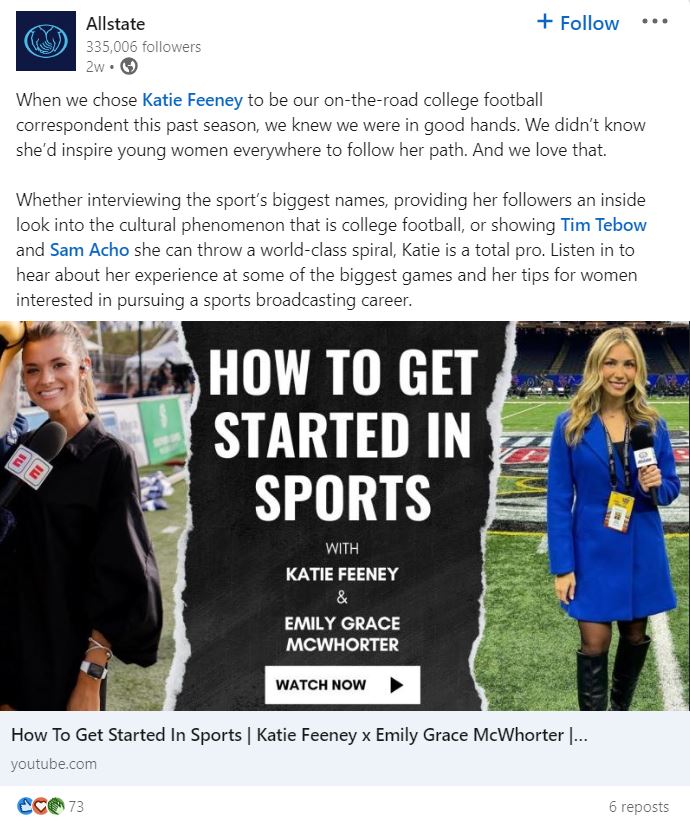
Building Brand Loyalty through Social Media
Social media excels at creating opportunities for insurance companies to build and nurture customer relationships beyond the initial sale, contributing to long-term brand loyalty:
- Exceptional Customer Service: Leveraging social media as a customer service channel can significantly enhance customer satisfaction. Prompt and helpful responses to inquiries and concerns on these platforms can improve public perception and loyalty.
- Customer Testimonials and Stories: Sharing customer success stories and testimonials can humanize the brand and build trust with potential customers. Real-life examples of how insurance has positively impacted customers can be very persuasive.
- Supporting Community and Social Causes: Younger consumers gravitate towards brands that demonstrate social responsibility. Insurance companies can use their social media presence to highlight their contributions to community projects and other causes, aligning with their target audience’s values. Take a look at the example below from Nationwide.
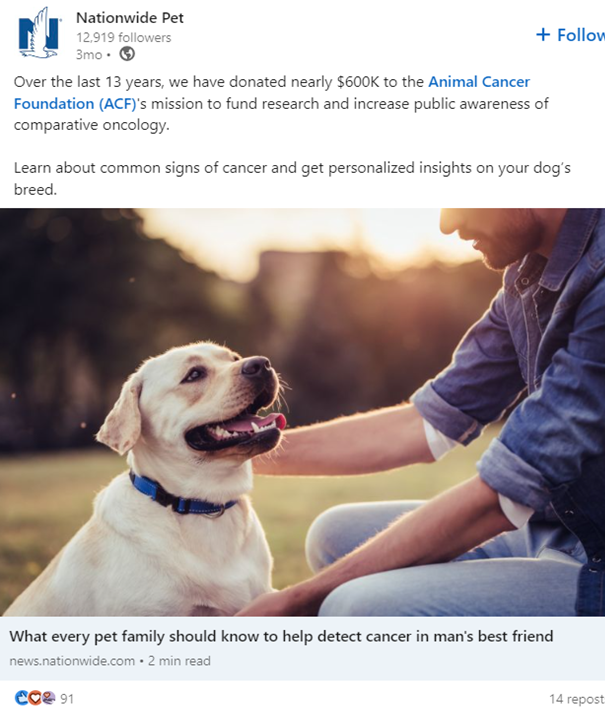
Data-Driven Insights and Personalization in Social Media Marketing
In the realm of social media, the power of data-driven insights and personalization cannot be overstated. By harnessing the vast amounts of data generated through social media interactions, insurance companies can gain deep insights into customer behaviors, preferences, and needs. This information is invaluable for crafting personalized marketing messages that resonate on a more individual level.
- Tailoring Content: Utilizing analytics tools, insurers can segment their audience based on various criteria, such as demographics, behavior, and engagement levels. This enables the creation of tailored content that speaks directly to the needs and interests of different segments, increasing relevance and engagement.
- Predictive Analytics: Advanced data analysis techniques can help predict trends and customer needs, allowing insurers to be proactive in their marketing efforts. For example, identifying life events such as buying a house or having a baby can enable insurers to offer relevant insurance products at the right time.
- Enhancing Customer Experience: Personalization extends beyond marketing messages to the overall customer experience. By understanding customer preferences, insurers can customize their interactions on social media, from the tone of communication to the types of content shared, creating a more personalized and engaging experience.
Maximizing the Impact of Visual Content in Social Media
In the digital age, visual content reigns supreme in capturing the attention of audiences across social media platforms. Insurance companies, traditionally seen as providers of complex and intangible services, can significantly benefit from integrating visual storytelling into their social media strategies. This approach not only enhances engagement but also aids in demystifying insurance products and services for a broader audience.
Harnessing the Power of Images and Videos: Visuals, such as images and videos, are incredibly effective in breaking down complex insurance concepts into digestible and relatable content. For instance, short explainer videos can illustrate the benefits of different insurance policies or the process of filing a claim, making these topics more accessible to the general public. Incorporating real-life scenarios and testimonials within these visuals can further personalize the message, making it resonate with viewers on a deeper level.
Infographics for Simplified Communication: Infographics serve as another powerful tool in the visual arsenal, capable of condensing detailed information into easy-to-understand graphics. By presenting data and processes visually, insurance companies can educate their audience on important aspects of insurance, such as coverage options, risk management tips, or industry trends, in an engaging and straightforward manner.
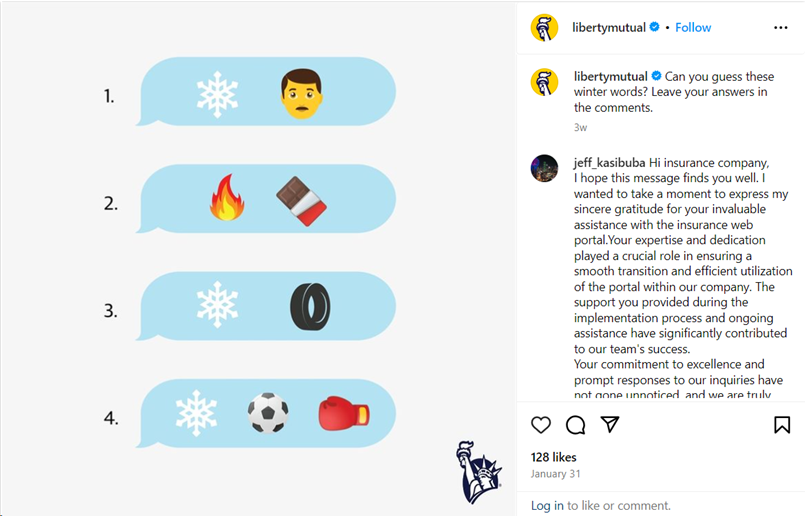
An example of interactive content from Liberty Mutual.
Interactive Content to Boost Engagement: Beyond static images and videos, interactive visual content like quizzes, polls, and interactive infographics can significantly increase user engagement. These formats encourage participation and can provide valuable insights into consumer preferences and behaviors. For insurance companies, this means an opportunity to tailor their offerings and communication strategies based on direct feedback from their target audience.
Leveraging User-Generated Content: Encouraging customers to share their own stories and experiences with insurance through photos, videos, and testimonials can add a layer of authenticity and trust to the brand’s social media presence. User-generated content not only enriches the company’s content library but also fosters a sense of community among followers, enhancing brand loyalty.
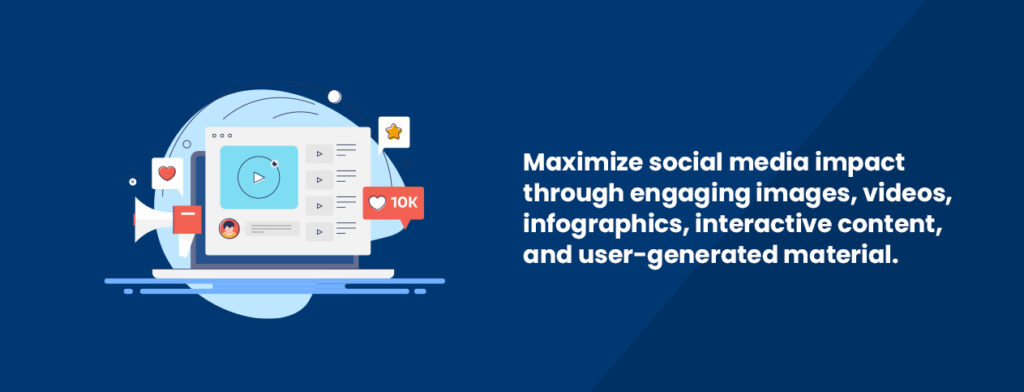
Best Practices for Visual Content on Social Media:
- Consistency in Branding: Ensure that all visual content aligns with the brand’s identity and message. Consistent use of colors, logos, and styles helps in building brand recognition.
- Accessibility: Make visual content accessible to everyone, including those with disabilities, by adding descriptive alt texts to images and captions or transcripts for videos.
- Engagement Analysis: Regularly analyze engagement metrics to understand what types of visual content resonate most with your audience. Use these insights to refine and optimize your content strategy.
By maximizing the impact of visual content, insurance companies can not only enhance their social media presence but also bridge the gap between complex insurance products and the needs of a diverse audience. Visual storytelling offers a compelling way to convey value, educate consumers, and build lasting relationships through social media.
Adapting to the Digital Age with Innovative Strategies
As social media continues to evolve, insurance companies must stay ahead of the curve by adopting innovative strategies that cater to the changing preferences of consumers:
- Augmented Reality (AR) and Virtual Reality (VR): Implementing AR and VR in social media campaigns can provide immersive experiences, such as virtual tours of insurance facilities or interactive simulations of insurance scenarios, offering innovative ways to engage and educate potential customers.
- Chatbots and AI for Customer Interaction: Integrating AI-driven chatbots on social media platforms can provide instant, 24/7 assistance to customers, answering queries, offering quotes, and guiding users through the insurance purchasing process, enhancing the customer experience.
The strategic use of social media in insurance marketing offers a pathway to connect with younger demographics, build lasting brand loyalty, and navigate the complexities of today’s market. By embracing innovative technologies and tailoring content to meet the expectations of a digital-first audience, insurance companies can leverage social media to secure a competitive edge and foster sustainable growth.
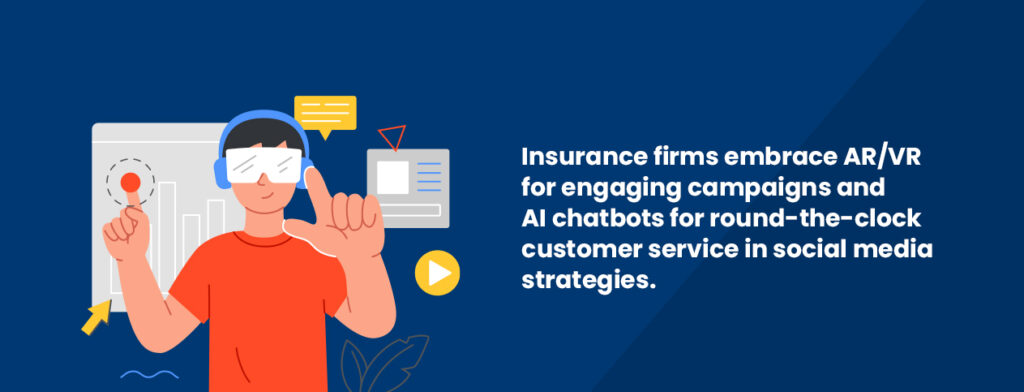
Ready to Transform Your Insurance Marketing Strategy?
Insurance Inbound is at the forefront of integrating advanced digital marketing solutions tailored for the insurance sector. Our expertise in leveraging social media can help your company connect deeply with younger audiences, enhance brand loyalty, and overcome the challenges of the digital age. Contact us today to explore how we can elevate your insurance marketing strategy to new heights.
